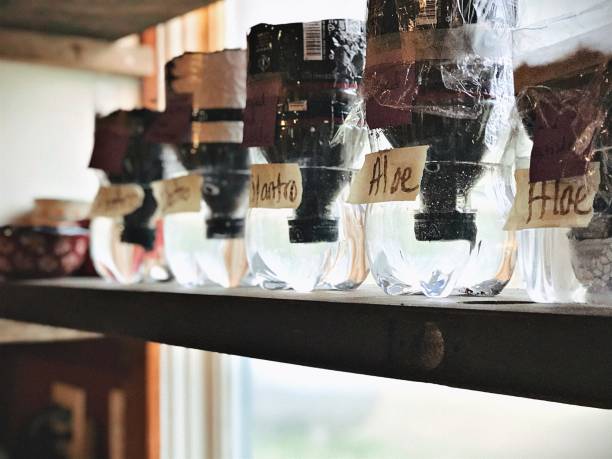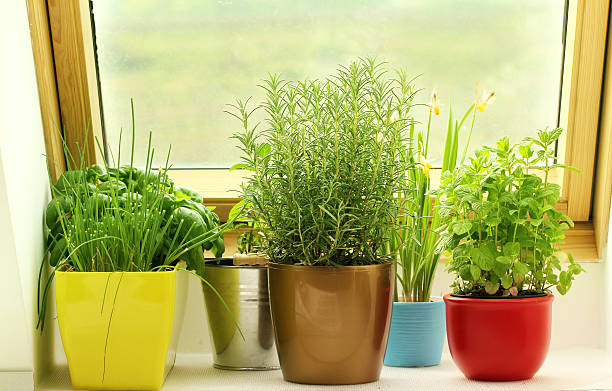Are you a foodie dreaming of a personal herb supply at your fingertips? Or perhaps you simply crave the invigorating scents of rosemary, mint, and basil? An indoor herb garden allows you to enjoy fresh flavors and aromas year-round, right in your own home. In this guide, we’ll cover everything you need to cultivate a flourishing indoor garden brimming with culinary herbs.
Why Grow Herbs Indoors?
Before we dive into the specifics, let’s explore the compelling reasons to start an indoor herb garden:
- Convenience: No more last-minute trips to the grocery store when your recipe calls for fresh herbs. Just snip what you need from your personal stash!
- Cost Savings: A small upfront investment in supplies can yield an abundant, long-lasting harvest of herbs that would cost far more purchased from markets.
- Health Benefits: Gardening has therapeutic effects, reducing stress and providing light exercise. Plus, fresh herbs pack robust flavors with minimal calories.
- Eco-Friendly: Reduce your carbon footprint by growing herbs rather than consuming ones shipped from far away.
Getting Started: Choose Your Herbs Wisely

The first step is selecting herbs suited for indoor environments. Some excellent choices include:
- Basil: A warm-weather annual with aromatic leaves perfect for pesto, tomato dishes, and more.
- Mint: A vigorous grower ideal for teas, mojitos, and tabouli. Be sure to contain its spreading roots.
- Rosemary: A woody perennial herb with piney notes delicious in roasted dishes and breads.
- Thyme: This compact perennial infuses savory flavors into soups, stews, and rubs.
When choosing herbs, consider their growth habits. Upright varieties like rosemary suit narrower pots, while trailing plants like mint require more room to ramble. Certain herbs like parsley and cilantro can tolerate lower light levels.
As for quantities, start modest with 2-4 varieties until you gain experience caring for them indoors.
Create the Optimal Indoor Environment
Herbs have specific environmental needs to thrive indoors. By replicating their preferred conditions, you’ll be rewarded with lush, flavorful plants.
Light Requirements
Most culinary herbs crave lots of sunshine, around 6-8 hours of direct light daily. South or west-facing windows are ideal for these light-lovers.
If natural illumination is lacking, you’ll need to supplement with grow lights. LED or fluorescent fixtures situated 4-6 inches above plants for 14-16 hours per day can provide enough brightness.
Temperature and Humidity
The perfect temperature range for most herb varieties is 65°F – 70°F. Outside this zone, they may experience stunted growth, disease, or failure to thrive.
Many herbs also prefer moderate humidity levels around 40-50%. Dry indoor air can lead to problems like spider mite infestations. Using a portable humidifier near your garden can create a more herb-friendly environment.
Signs that humidity is too low include:
- Dry, crispy leaves
- Slowed growth
- Flower/bud drop
Soil, Nutrients, and Watering
Using a premium, well-draining potting mix formulated for herbs/vegetables is crucial. These blends provide the ideal nutrient balance and drainage that prevents issues like root rot.
Most edible herbs have modest fertilizer needs. A balanced, water-soluble fertilizer applied every 2-4 weeks according to product instructions should suffice.
When it comes to watering, the “soak and dry” method works best:
- Water thoroughly until excess moisture drains from the bottom of the pot.
- Allow the soil surface to fully dry before watering again.
Consistent soil moisture, not too dry or waterlogged, is key to preventing problems. You may need to adjust watering frequency based on your home’s humidity levels.
Plant Care and Maintenance
Even after providing the perfect environment, your indoor herbs will need some routine care to thrive. Here are some essential maintenance tips:

Pruning and Harvesting
Regular pruning encourages lush, bushy growth in herbs. Use clean shears to snip off longer stems just above leaf nodes.
When harvesting for kitchen use:
- Take no more than 1/3 of the plant’s growth at once
- Make clean cuts rather than tearing
- Harvest in the morning after dew has dried
By consistently removing longer stems, your herbs will keep producing tasty new foliage.
Managing Pests and Disease
Common insect pests of indoor herbs include:
- Aphids
- Spider mites
- Whiteflies
- Fungus gnats
The best approach is an Integrated Pest Management (IPM) strategy:
1. **Monitoring**: Regularly inspect plants for early signs of pests/disease.
2. **Identification**: Accurately identify the pest/pathogen.
3. **Prevention**: Use proper cultivation practices that deter problems.
4. **Intervention**: If issues arise, first try mechanical controls like
vigorous sprays of water or insecticidal soaps/oils.
With diligent monitoring, you can nip most issues in the bud before they get out of hand.
Troubleshooting Tips
Despite your best efforts, herbs may occasionally show signs of distress. Here are some tips for troubleshooting common problems:
| Issue | Likely Cause | Solutions |
|---|---|---|
| Wilting | Underwatered | Increase watering frequency |
| Yellow Leaves | Too much water | Allow soil to dry more between waterings |
| Leggy Growth | Insufficient light | Add supplemental lighting or move to sunnier spot |
| Purplish Leaves | Phosphorus deficiency | Apply balanced fertilizer |
| Pale New Growth | Nitrogen deficiency | Use compost tea or fish emulsion fertilizer |
By being attentive to your plants’ needs, you can take corrective measures before issues become severe.
Getting Creative with Your Herb Bounty
With a flourishing indoor herb garden, you’ll soon have an abundance of fresh flavors at your disposal! Here are just some ideas for making the most of your harvest:

Cooking With Fresh Herbs
Herbs can elevate even the simplest dishes into gourmet delights. Some tasty ways to use them:
- Pestos: Blend basil, parsley, or cilantro with olive oil, garlic, nuts, and Parmesan
- Herbed Butters: Mix softened butter with finely chopped rosemary, thyme, chives
- Salad Dressings: Whisk fresh herbs into vinaigrettes for added zing
- Rubs and Marinades: Create signature seasoning blends for meats and vegetables
Store tender herbs like basil, cilantro, and parsley with stems trimmed and submerged in a glass of water, or frozen in olive oil for longer storage.
Herbal Teas, Oils, and Vinegars
Capture your herbs’ bright, invigorating essence in teas, oils, and vinegars you can use for months:
- Herbal Teas: Steep fresh or dried leaves in boiling water for aromatic, healthful teas.
- Infused Oils: Fill decorative bottles with olive oil and herbs like rosemary or thyme. Allow to infuse for several weeks before straining.
- Herbed Vinegars: Similarly, you can make tasty vinegars using wine or cider vinegar and herb blends.
These make beautiful, fragrant gifts as well!
Decorative and Aromatic Uses
Herbs have ornamental value beyond the kitchen. Get creative with displays like:
- Topiaries: Train compact herbs like rosemary into delightful tiny “trees.”
- Living Wreaths: Using a wreath frame, design a lush wreath with trailing herbs.
- Sachets and Potpourri: Combine dried herb leaves with flowers for aromatic home accents.
- Natural Air Fresheners: Simply set out small bunches of herbs like lavender or mint.
With their lovely scents and textures, herbs can beautify any living space.
Get Growing Your Indoor Herb Garden!
While growing your own herbs indoors requires some effort, the endless payoff of fresh flavor at your fingertips makes it all worthwhile. Start small with 2-3 herb varieties well-suited for your home’s conditions.
With the basics of proper light, soil, water, and basic plant care under your belt, you’ll be well on your way to becoming an indoor herb-growing pro! Don’t get discouraged by the occasional setback – just consult the troubleshooting guide and get your plants back on track.
Before you know it, you’ll have a verdant indoor garden providing enough fresh herbs to elevate all your culinary creations. The aromas of basil, rosemary, thyme, and more will permeate your kitchen and living spaces. Not only will cooking be more flavorful, but tending your herb plants can provide a soothing dose of nature therapy right in your own home.
So gather your containers, seeds or starter plants, and get ready to experience the rewards of growing an indoor herb garden. With a little knowledge and TLC, you’ll soon be harvesting homegrown herbal goodness year-round!
Tip: Keep a gardening journal to track your herbs’ progress, make notes on care routines, and record anything you’d do differently next time.
Quick Summary: Growing Herbs Indoors
- Choose varieties like basil, mint, rosemary, thyme suited for indoor environments
- Provide ample sunlight (6-8 hrs) via sunny windows or grow lights
- Maintain ideal 65°F-70°F temps and 40-50% humidity levels
- Use well-draining potting mix and follow a consistent watering routine
- Prune regularly and harvest no more than 1/3 of the plant
- Monitor for pests/disease and address issues promptly
- Get creative by making herbal oils, teas, decor and more!
With some basic setup and routine care, you too can become an indoor herb gardening master. The freshest flavors will always be just steps away in your own green indoor oasis!
If you have any doubts or queries, feel free to write to us. It would be a great pleasure to help you out.
